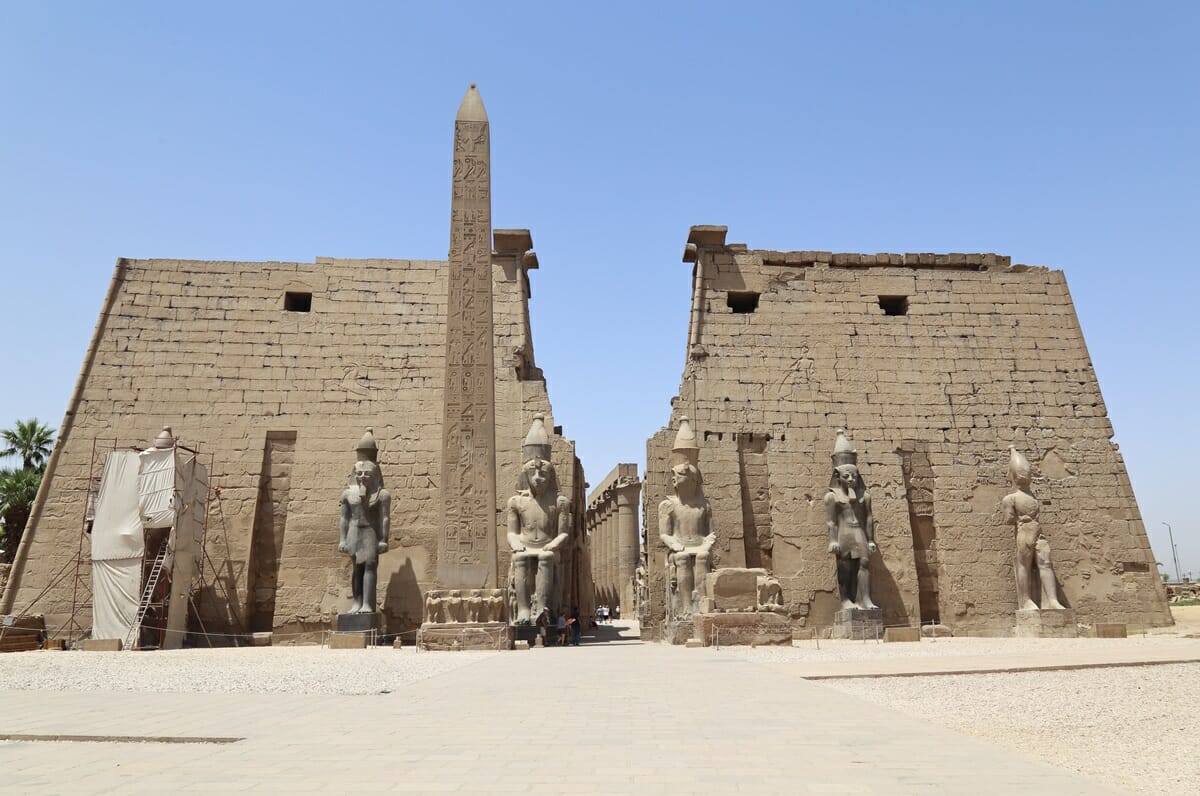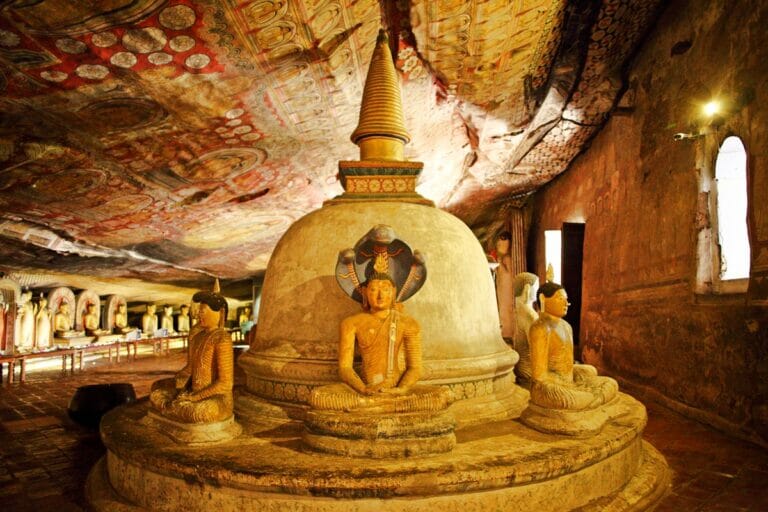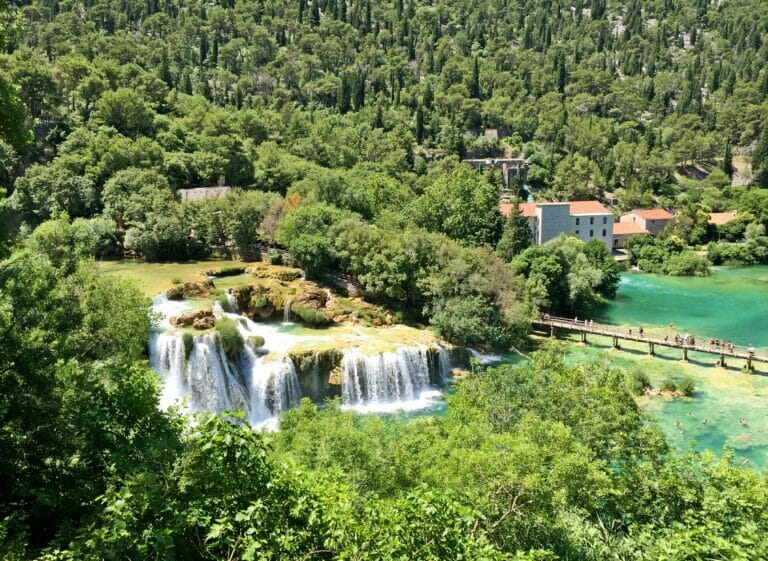Discover the City of Palaces in Egypt: 6 Incredible Things to Do in Luxor
Luxor is home to not only the Valley of the Kings but also heritage temples and landmarks aplenty. Read on for what you can’t miss in Luxor!
Dating back to 3200 B.C., the city of Luxor is a must-visit destination in Egypt for history and archaeology lovers. It was once known as the city of Thebes and served as an important religious and political epicenter in ancient Egypt.
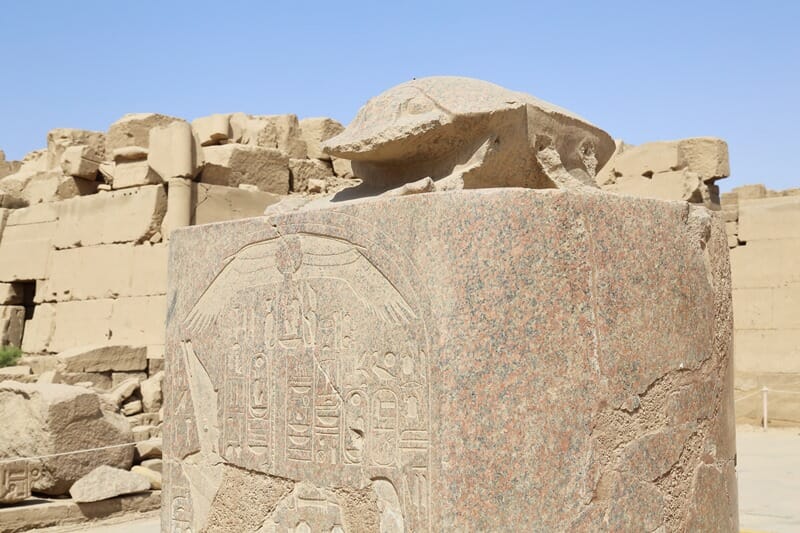
Today, the open-air museum spans the east and west banks of the Nile and contains precious remnants from the golden age of pharaohs and queens.
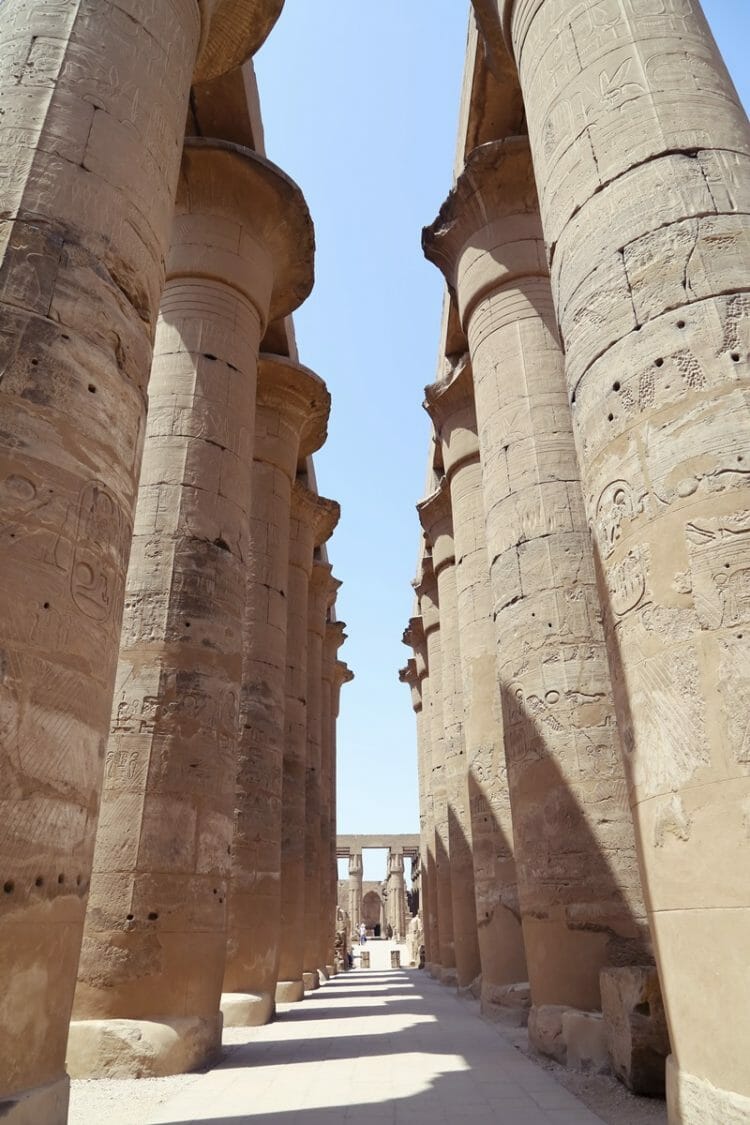
Whether you fly or sail into Luxor, you’re bound to be astounded by the impeccably preserved and restored temples, tombs and towering statues. Read on for the top attractions in Luxor, how to spend 2 days in this historic city and my recommendation for a fantastic tour company in Egypt.
You might also like: 16 Essential Things to Know Before You Travel to Egypt
Tips for your first trip to Egypt
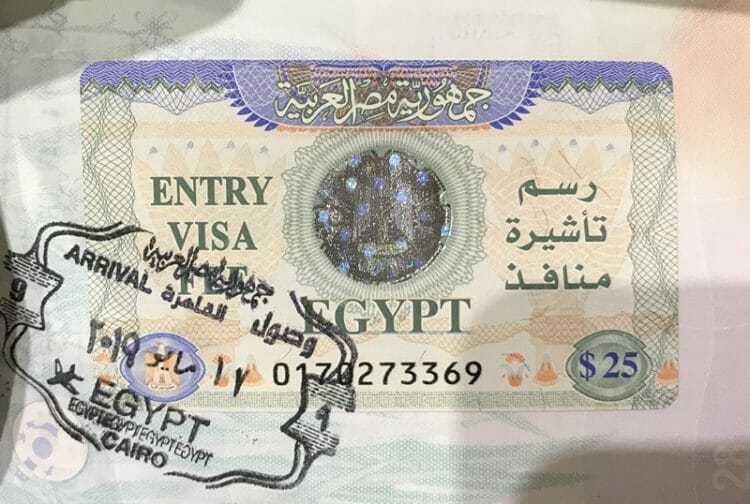
✈️ How to get to Egypt: Egypt is well-connected by international airlines with major airports in Cairo, Luxor, Sharm El Sheikh and Hurghada. We spent 1 week in Jordan before flying direct from Amman to Cairo on Royal Jordanian Airlines; after spending 2 days in Cairo, we hopped on a domestic flight to Aswan and sailed on the River Nile towards Luxor.
You can also fly direct to Luxor International Airport on a select number of airlines from destinations such as Rome, Istanbul, London and Barcelona – some of these international flights may operate on a seasonal basis only.
🛂 Visa requirements for Egypt: Nationals from certain countries are eligible for an e-visa. Instead of applying for an e-visa via the official Egypt e-visa application website, buy your Egypt visa-on-arrival for US$25 from the National Bank of Egypt counters at Luxor airport (before you go through immigration). The visa is valid for 30 days.
💱 Currency in Egypt: The local currency is the Egyptian Pound (LE). The exchange rate is approximately 30 LE to US$1 or 32 LE to 1 Euro. Cash is king in Egypt, so make sure you exchange a small amount when you arrive; get your hands on as many small-denomination bills as possible as tipping is very much expected in Egypt.
📱 Staying connected in Egypt: You can purchase a local SIM card at the airport or from small grocery stores. If you are arriving in Luxor via a Nile cruise, there are convenience stores located along the main road where the cruise ships dock.
🌤️ When to visit Egypt: Egypt’s peak tourism season runs from around September to April when the weather is somewhat milder. During this time, there are a large number of tourists at the major sightseeing landmarks. We visited in May (the shoulder season), and the heat was fairly unbearable in Luxor, especially as Luxor is one of the driest cities in the world. The temperature soared above 40 degrees Celsius (104 Fahrenheit) by 10, 11 AM in the mornings and there is minimal shade. For those who are especially sensitive to heat, I would recommend visiting Egypt and Luxor in the “winter” months from December to February.
👚 Dress code in Egypt: If you are a female traveler, leave your shorts, tube tops and anything exposing your arms and legs at home. Egypt is a majority Muslim country and you should dress modestly: both men and women should cover their shoulders and legs. Although it is best to dress on the conservative side, you may see tourists walking around at major attractions in shorts and tank tops.
💧 Water in Egypt: It is not safe to drink tap water in Egypt. You should boil water before drinking or use a water purifier bottle.
🧳 What to bring to Egypt: Sunscreen, a hat, refillable water bottle, wet wipes/hand sanitizer, walking shoes or sandals. Luxor is extremely toasty so you might want to bring an electric fan. Leave your drone at home as Egypt has strict drone laws.
Looking for even more Egypt destination guides and travel tips? Head on over here or check out my 7 day Egypt itinerary for first time visitors!
Is it safe to visit Egypt?
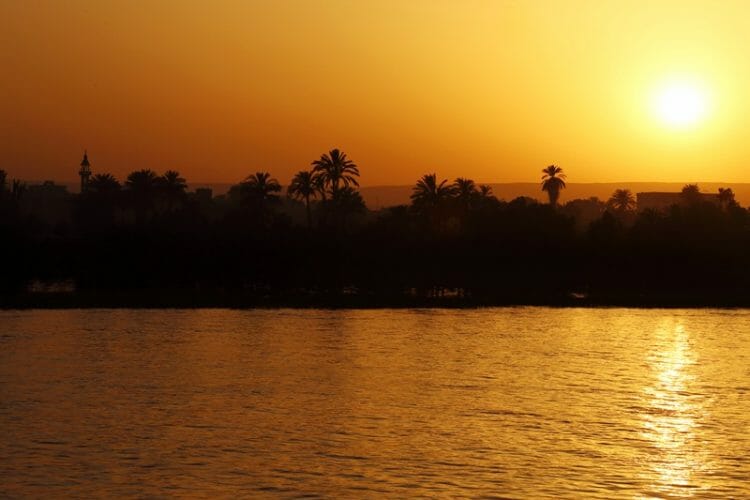
If you’re wondering, “is it safe to visit Egypt?” Here’s what you need to know. There has been a number of terrorist attacks by extremists across Egypt over the past 30 years. Tourists as well as Egyptian security forces have been targeted by terrorists, and attacks have taken place at religious sites, large public gatherings, hotels and tourist landmarks. In the past few years alone there have been two roadside bombs and a deadly car bomb attack in Cairo.
One of the deadliest terrorist attacks took place in Luxor in 1997: 62 tourists were killed at the Al-Deir Al-Bahari site in Luxor by terrorists. More recently in 2015, Egypt’s security forces said they foiled a suicide bomb attack at the ancient Karnak temple.
The fact is, no country is impervious to bad actors and extremists; however, I do believe that safety and security is an issue that has to be considered seriously before traveling to Egypt. Though we made the decision to travel to Egypt despite the concerns, it doesn’t mean that it is my place to tell anyone that it is “perfectly safe” to visit Egypt.
In fact, during our trip in 2019 we passed the wreckage of a tour bus full of South African tourists that had just hit a roadside bomb near the new Egyptian Museum. Thankfully, I believe that there were no casualties – but the event left us feeling very shaken up and anxious. Though there are security checks and road barricades at most major tourist sites as well as armed military on the roads, I encourage you to stay abreast of news concerning Egypt ahead of your trip, and check Egypt travel advisories for the latest updates and developments.
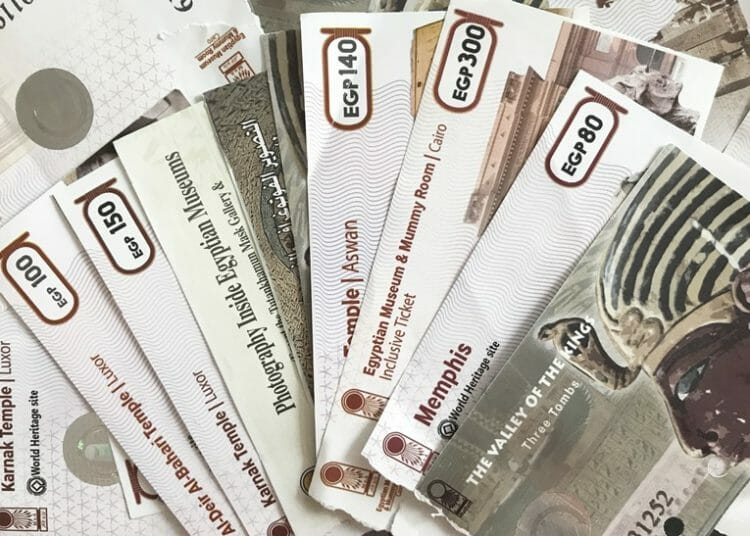
In terms of common scams in Egypt, you should assume that nothing is free – don’t take photos of the camels, don’t take photos of the guards, don’t accept any “free” souvenirs. Keep a close eye on your belongings and don’t hand your camera over to anyone but your guide. In Luxor, a “Nile cruise waiter” scam has become quite popular: basically, men target cruise passengers who venture off the boat without a guide.
They will claim to be a waiter, porter or receptionist on the boat and say that they can show you around Luxor…except they don’t actually work on the boat at all and will demand a tidy sum after the tour. The scam is very convincing, and the scam artists will say things like, “hello my friend! Remember me? I work on the boat!” in the hopes that you’ll confuse them with an actual staff member on the ship. Don’t go anywhere with them, and always ask your guide or the official cruise ship staff if you need help.
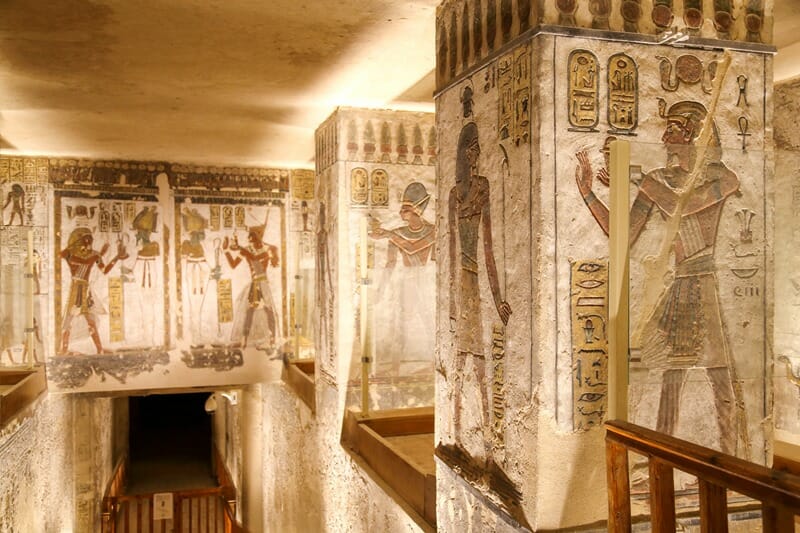
Another thing to be aware of in Egypt is the corrupt security guards stationed at all of the tourist attractions. Many landmarks (like the tombs in the Valley of the Kings) do not allow tour guides to enter with their guests to restrict the foot traffic (to reduce congestion and external contaminants that visitors bring into the sites).
So what do the security guards do when the tourists are alone? They offer “secret” tours to areas that are off-limits, photo-bomb your shots and ask for money, or tell you that photos are not allowed (but they’ll let you take photos if you pay them). At the Temple of Hatshepsut, one guard even tore the scarf off a woman’s neck, tied it into a turban on her head without her permission and then demanded money – when you are surrounded by 4 “official” guards what are you going to do? She reluctantly opened her purse, handed over some cash, put the scarf back around her neck and walked away shaking her head. No one, and I mean no one, is immune to the incessant nagging and it can seriously dampen the experience of sightseeing in Egypt.
So, should you still visit Luxor and Egypt? My answer is: only if you’re comfortable doing so. No country is immune to attacks and scams, and the vast majority of trips to Egypt are trouble-free. You can make things easier for yourself by enlisting an experienced tour company in Egypt to help you plan and organize your trip.
In terms of safety, most governments also agree that you should take certain precautions including maintaining a high level of security awareness in crowded places and at large gatherings, and avoiding travel to the Sinai Peninsula, the Western Desert and border areas.
How to plan a trip to Egypt
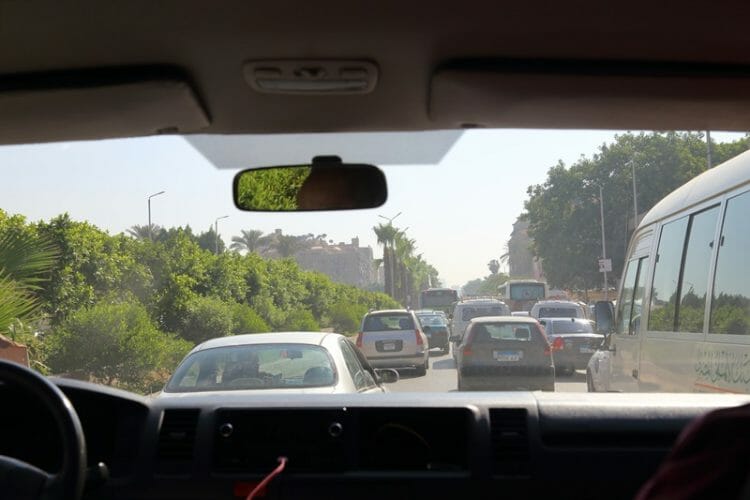
Egypt is not an “easy” tourist destination to visit by any means, so my position is that you should make it easier on yourself by going on a private tour with an experienced tour company.
Traveling to Egypt left me feeling conflicted: on the one hand, it offers thousands of years of unparalleled history and culture. On the other hand, every day was just a little bit challenging and draining. Our trip to Egypt would not have gone as smoothly as it did without the experience and impeccable professionalism of the Your Egypt Tours team who took care of us every single step of the way.
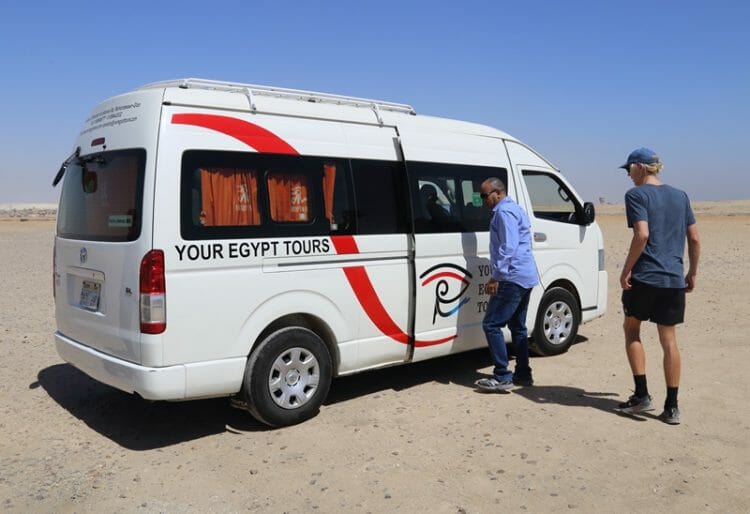
Though we typically prefer to travel on our own (like we did in Jordan) instead of through tour agencies, our private tour in Egypt was made complete by the knowledge of the Your Egypt Tours’ Egyptologists and experienced drivers. Making logistics arrangements in Egypt is no easy feat – we relied heavily on the Your Egypt Tours team to make our trip as enjoyable, safe and fuss-free as possible. They also coordinated closely with Egyptian security at each of the landmarks so that they could alter driving routes if needed.
It can be overwhelming when you’re researching Egypt tour packages (especially luxury Egypt tours) as there are just so many choices out there. But trust me when I tell you that you won’t regret planning your dream trip to Egypt with Your Egypt Tours. You can read more reviews from other travelers here or e-mail them at [email protected].
* Just so you know, we were paying customers with Your Egypt Tours and I was not compensated for this article.
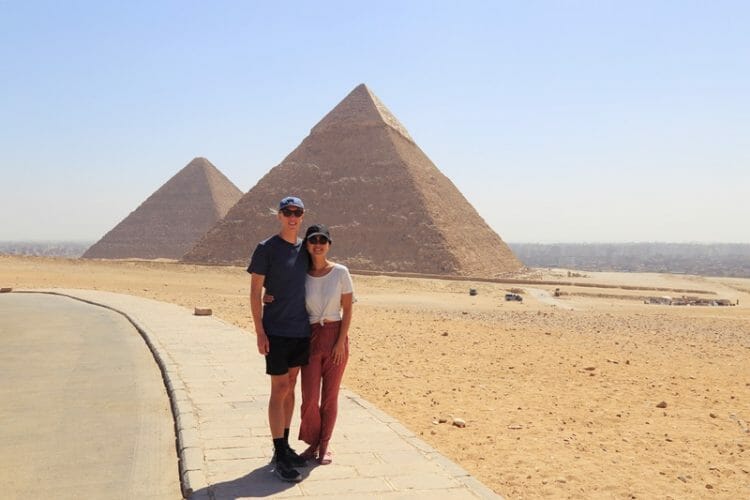
Just to give you a sense of how much to budget for a luxury trip to Egypt, we ended up spending about US$2000 per person over 7 days including the cost of the private tour, tips, 4 nights’ accommodation in Cairo, a 3-night Nile cruise, Egyptologist guide, driver, extra exhibits/tombs/camera fees, drinks and SIM cards.
If you don’t want a completely hands-off approach in Egypt and only want guided tours for a portion of your trip, you can also book individual day tours with Your Egypt Tours such as these day trips from Luxor. Ash was our guide in Luxor and I highly recommend that you see if he’s available!
Where to stay in Luxor, Egypt
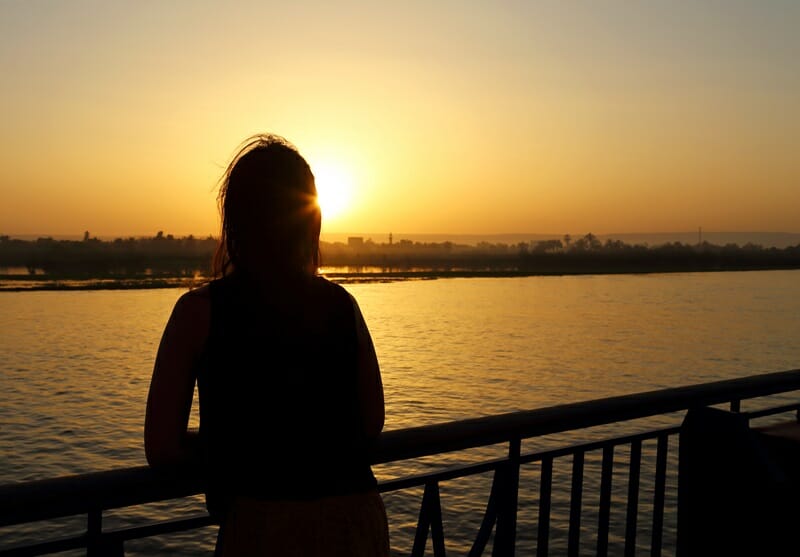
The vast majority of luxury and boutique hotels in Luxor are located on the East Bank. We stayed on our Nile cruise ship, so don’t have a specific hotel to recommend in Luxor.
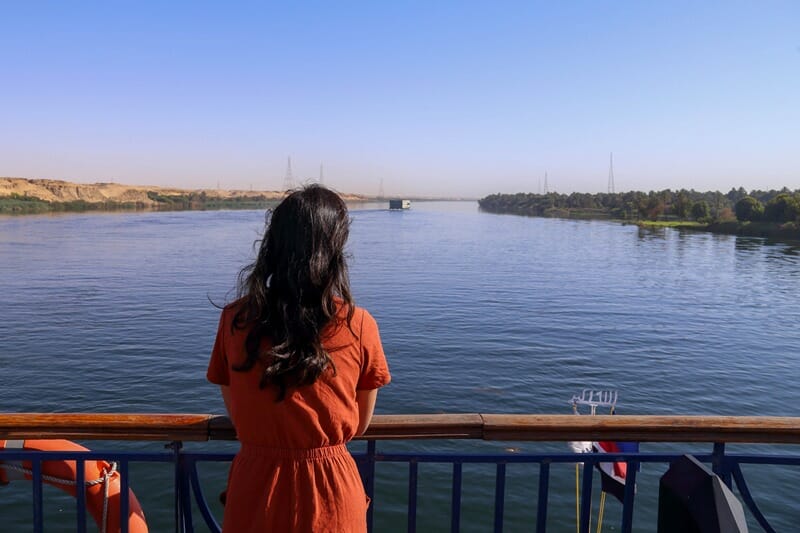
However, some of the top recommendations tend to be the Sofitel Winter Palace, Hilton Luxor, Mercure Luxor and Iberotel Luxor. In Egypt, there is a big step down in facilities from the 5-star luxury properties to “boutique” properties – I therefore recommend that you budget accordingly and opt to stay at higher end hotels. Click here to check availability and prices at highly rated hotels in Luxor, Egypt.
Looking for some Egypt Nile cruise options? Here are some highly-rated Nile cruise operators you might want to consider based on positive reviews from past guests. Bear in mind that the majority of Nile cruises depart either on Monday or Friday from Luxor or Aswan.
M/Y Alexander The Great Nile Cruise: For a mid-budget option consider this Nile cruise ship – the décor and furnishing is similar to the one we went on, and there is a small pool on board for a post-sightseeing dip. The ship has its own Egyptologists to take guests to the major landmarks, and reviewers say that the staff are very hospitable and helpful. The M/Y Alexander The Great sets sail from Luxor on Monday and Aswan on Friday. Click here to check rates and availability aboard M/Y Alexander The Great Nile Cruise.
Historia The Boutique Hotel Nile Cruise: For a high-end Nile cruise consider this luxury ship. The rooms and common areas are modern and tastefully designed, and past guests love the cocktail bar on board. Reviewers say that the food is delicious and the staff go above and beyond to make guests feel at home. Historia The Boutique Hotel Nile Cruise sets sail from Luxor on Monday and Aswan on Friday. Click here to check rates and availability aboard Historia The Boutique Hotel Nile Cruise.
6 Incredible Things to Do in Luxor, Egypt
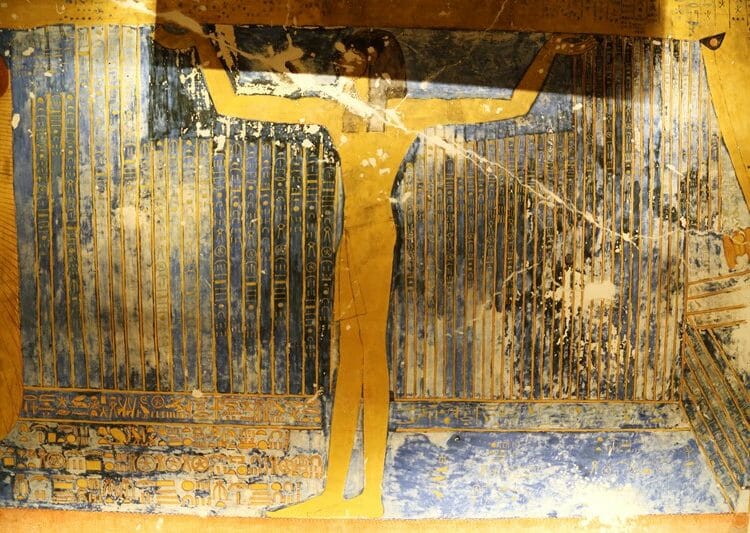
So you’ve decided to explore Egypt’s archaeological gems. Wondering what to do in Luxor and how much time to spend in the City of Palaces?
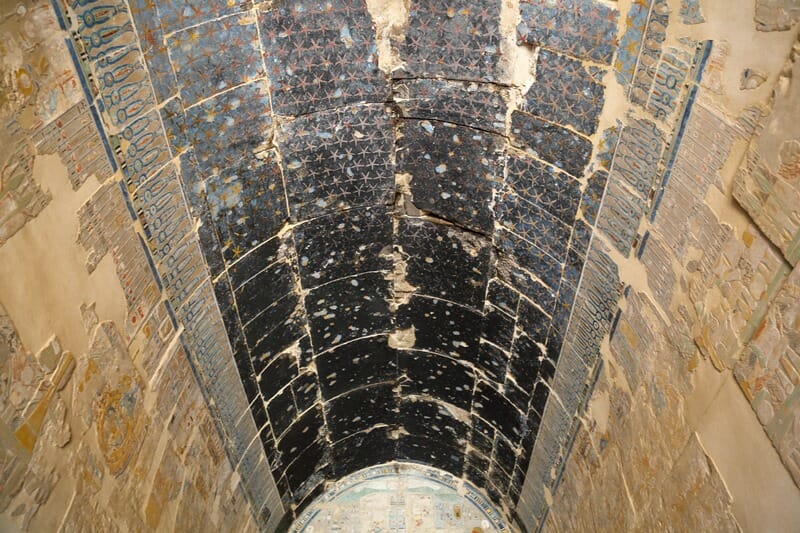
With dozens of Egypt’s most precious treasures, your Luxor itinerary will be packed to the brim with unmissable sights. If you only have 1 week in Egypt, plan on setting aside at least 2 days to explore the East and West banks of Luxor.
1. See the Colossi of Memnon
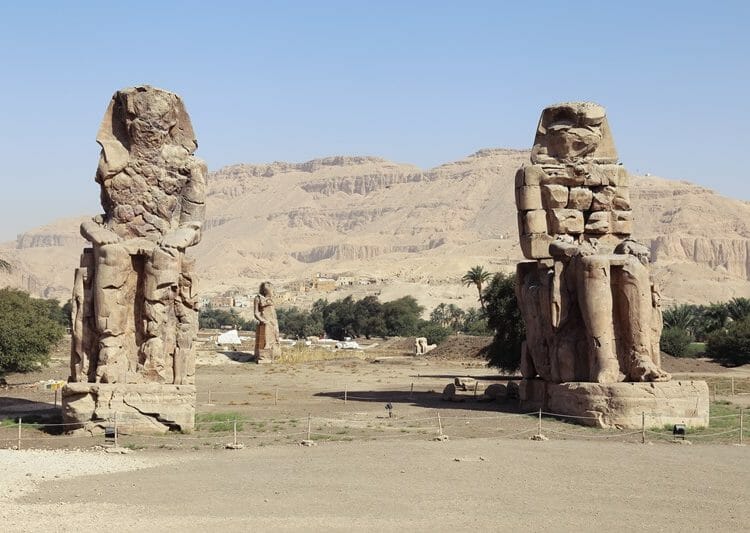
The West Bank in Luxor is where you’ll find most of the monuments and tombs for the dead. This is because for the ancient Egyptians, the sun “died” every day in the west, and was reborn in the east. The Colossi of Memnon is a set of statues guarding what was once the necropolis, the main burial grounds, of the ancient city of Thebes.
They are made of sandstone and stand approximately 23 metres tall; though they are severely damaged, the statues are still upright even after enduring nearly 3,400 years of annual Nile floods, plundering robbers, earthquakes and the elements.
It’s thought that the Colossi of Memnon represent the pharaoh Amenhotep III. There is no charge for visiting the statues, and are en-route to the Valley of the Kings. You shouldn’t need more than 10-15 minutes at this landmark.
2. Explore the Valley of the Kings
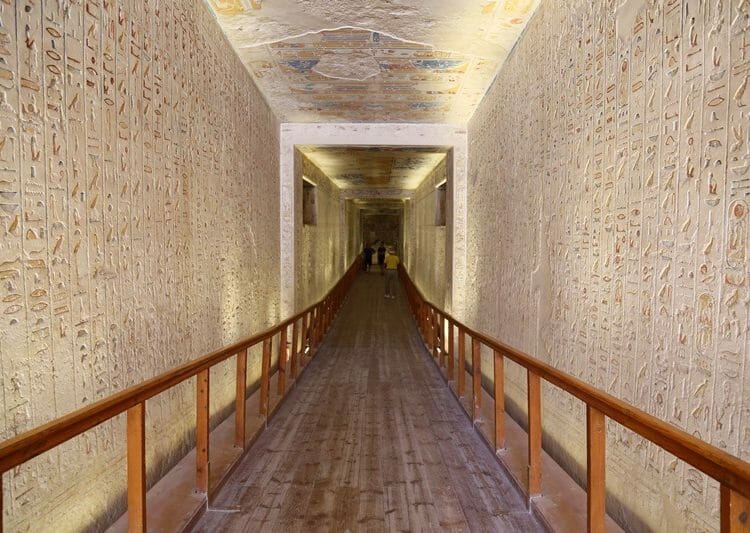
After the pyramids in Cairo, the Valley of the King is perhaps the next most prominent and historically significant landmark. The labyrinth of pharaonic and noble tombs have been explored for the past 200 years or so, and were used by the rulers of Egypt for more than five centuries.
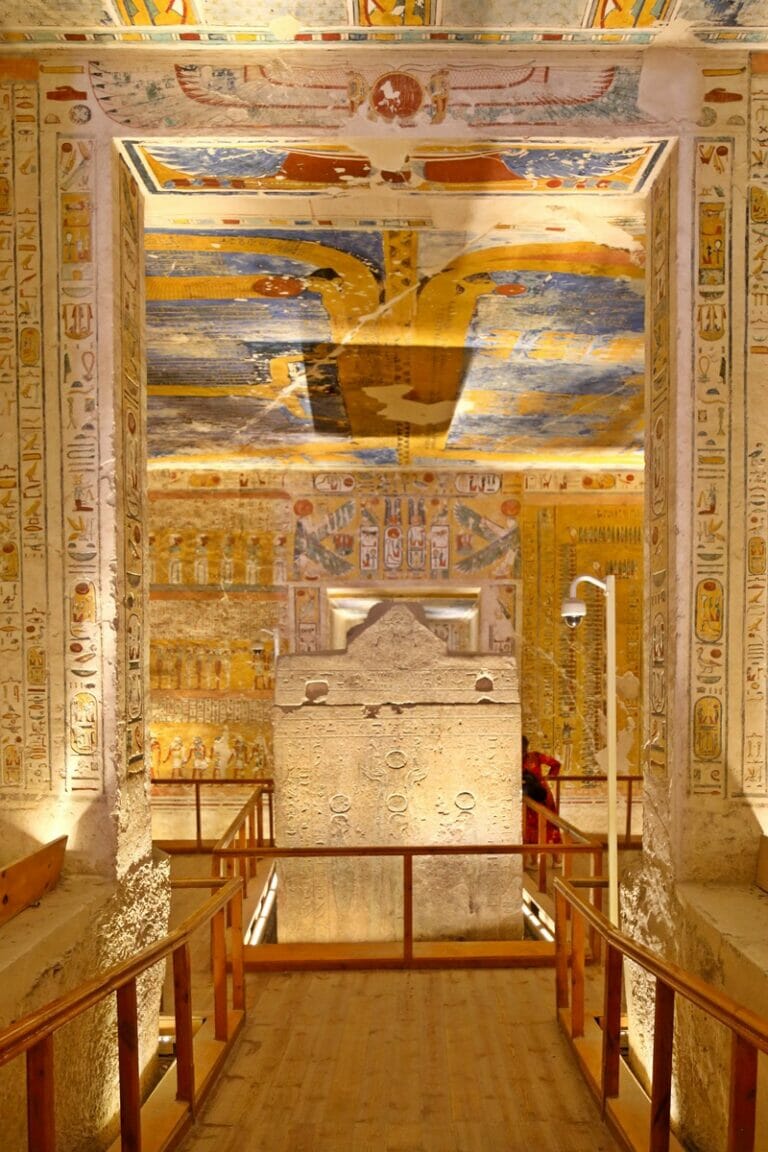
Today, the royal necropolis consists of approximately 24 royal tombs and 40 noble tombs; unlike the pyramids which were attractive for grave robbers, the tombs were built into a valley surrounded by pyramid-esque desert formations.
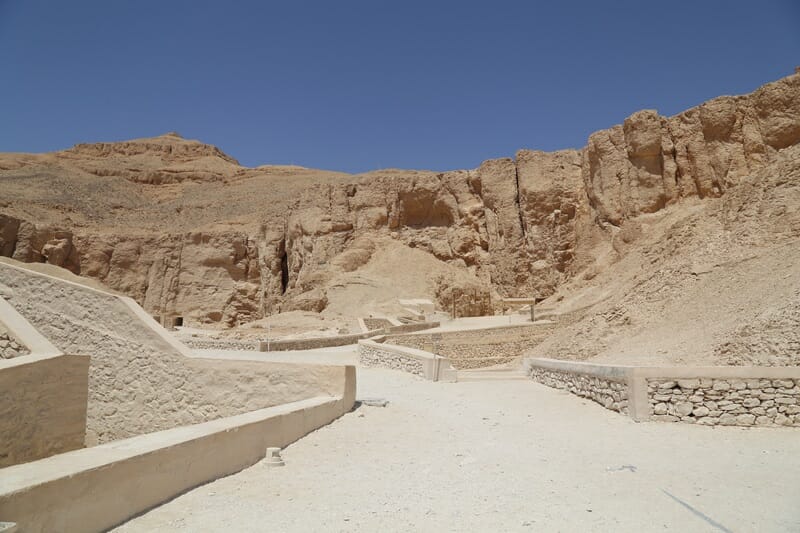
The Valley of the Kings is also home to the tomb of King Tutankhamen (“KV62”), discovered by Howard Carter in 1922. It’s thought that the tomb was between and beneath two other tombs, which may explain why Tut’s tomb was relatively intact when it was unearthed.
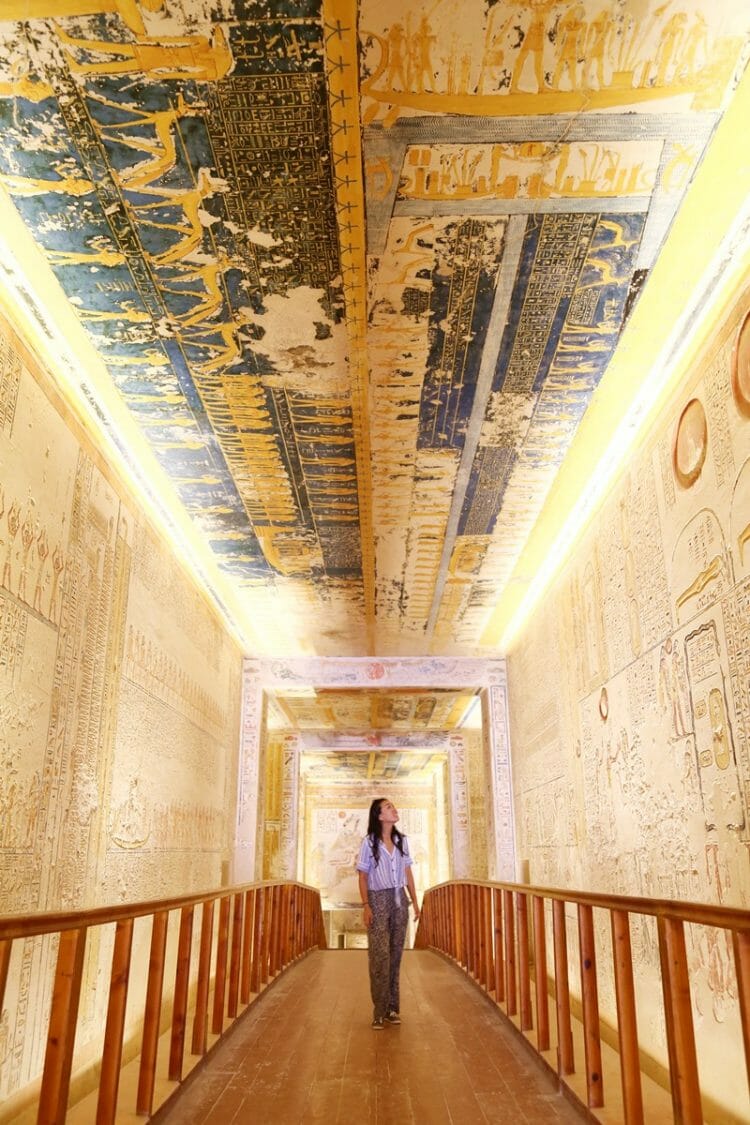
The ticket for the Valley of the Kings allows you to visit 3 tombs, though not every one is open to the public. You also have the chance to visit the tombs of Tutankhamen, Ramses V and VI and Seti I for extra entrance fees. However, you should know that the tomb of Tutankhamen is supposed to be one of the most bare and damaged in the Valley of the Kings, and all of the treasures have been moved to the Egyptian Museum in Cairo.
The cost to enter the tomb of Seti I is 1000 LE (US$60), so we opted to only pay an additional 100 LE to visit the tomb of Ramses V and VI.
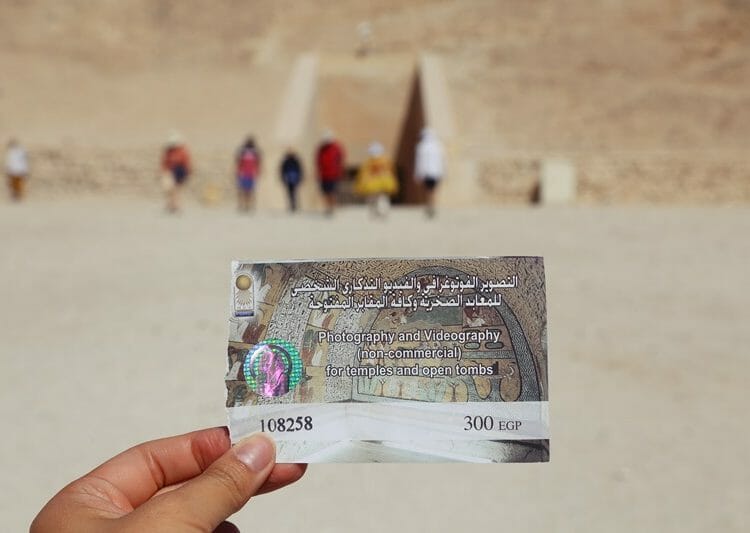
If you want to take any photos inside the tombs, you will need to pay an additional 300 LE for a photography ticket which you can only use in three tombs, and you can only use one device at a time (i.e., you can not simultaneously take photos with your camera and videos with your phone – you will need to put one away and keep alternating).
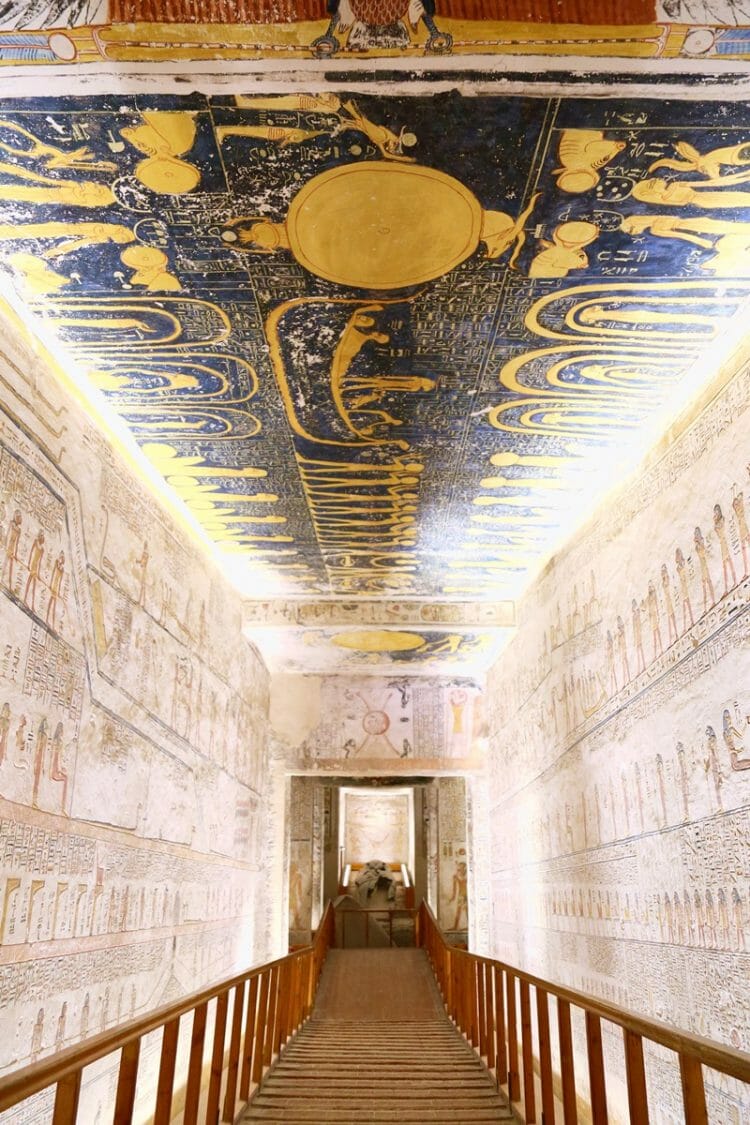
We entered the tombs of Ramses III, Ramses IV and Ramses I based on the recommendation from our guide. They were in fairly exquisite condition considering they date back 3,000 years, and the colours are still exceedingly vivid.
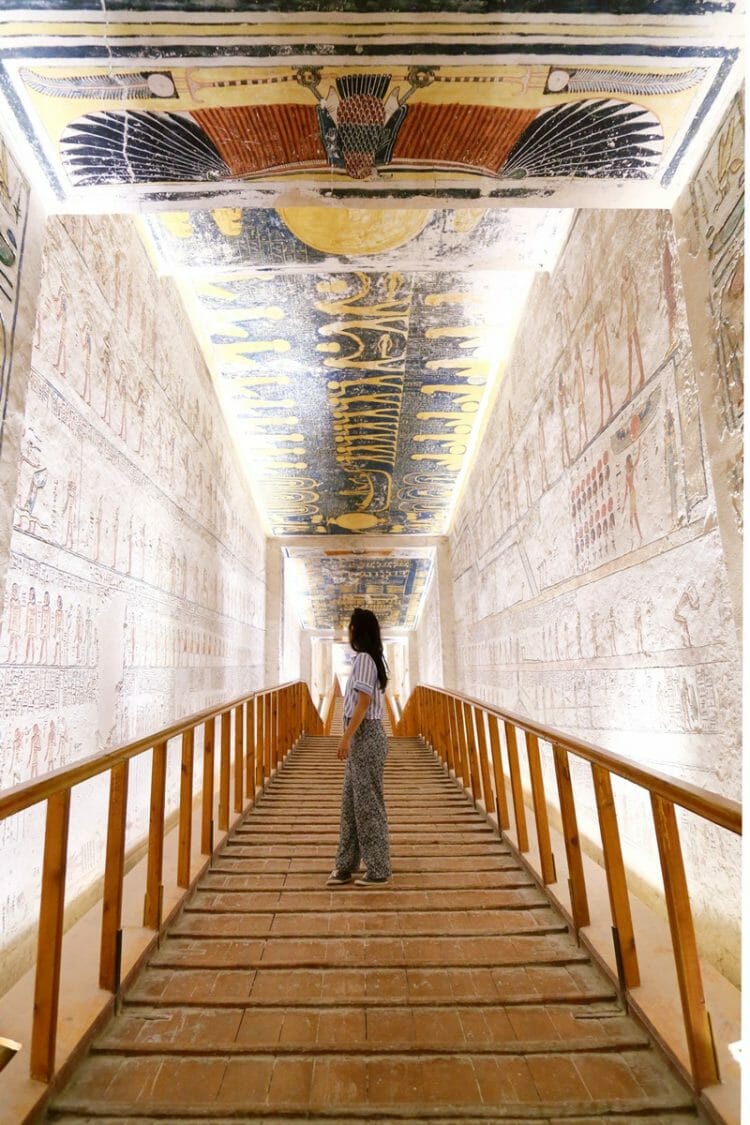
But the tomb that really blew our minds was that of Ramses V and VI, a combined tomb for two pharaohs: it was the least busy tomb that we visited, well-lit and the only tomb where the security guard left us alone.
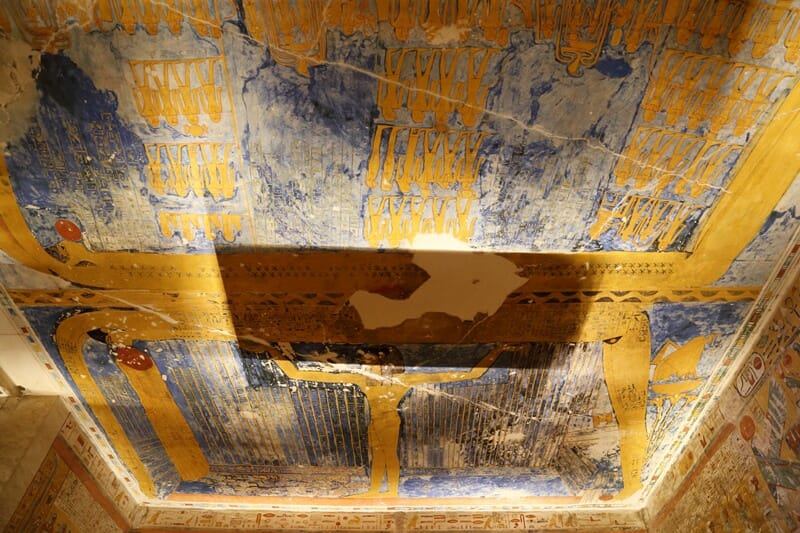
We got the place all to ourselves for more than 10 minutes – unheard of in Egypt!
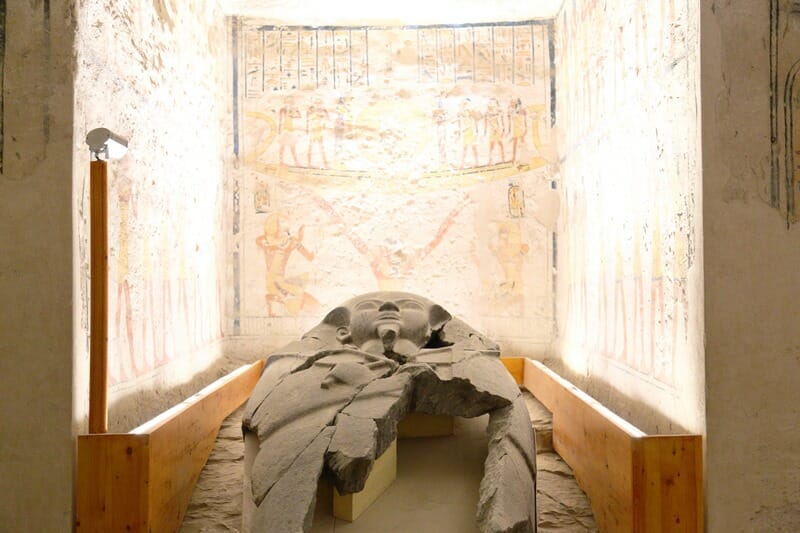
Pay close attention to the hieroglyphics and carvings depicting the pharaohs defeating and reigning over their enemies, the goddess Nut swallowing the sun, funerary boats transporting the pharaohs to the afterlife and the various Egyptian gods and goddesses.
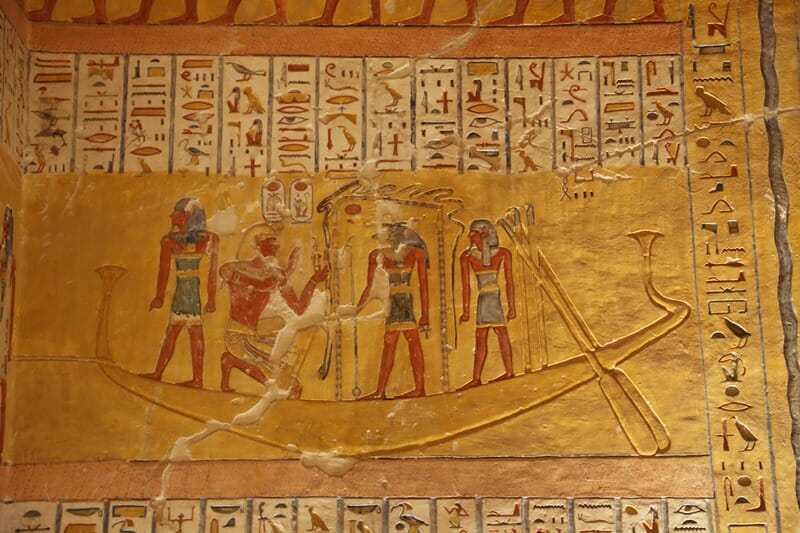
Plan on spending at least 2 hours at the Valley of the Kings to make the most of the experience – it’s not every day that you get to explore centuries-old history like this!
3. Visit the Temple of Hatshepsut
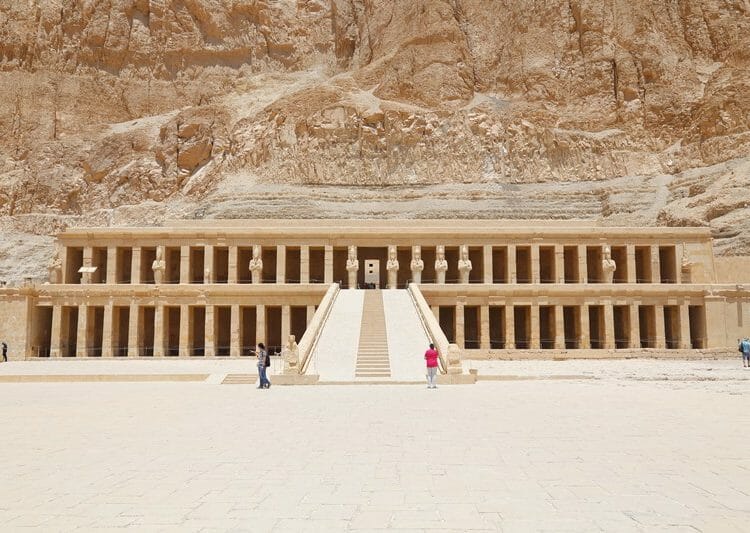
From the Valley of the Kings, continue on to visit the nearby Hatshepsut Temple at Deir el-Bahari, dedicated to the Queen Hatshepsut.
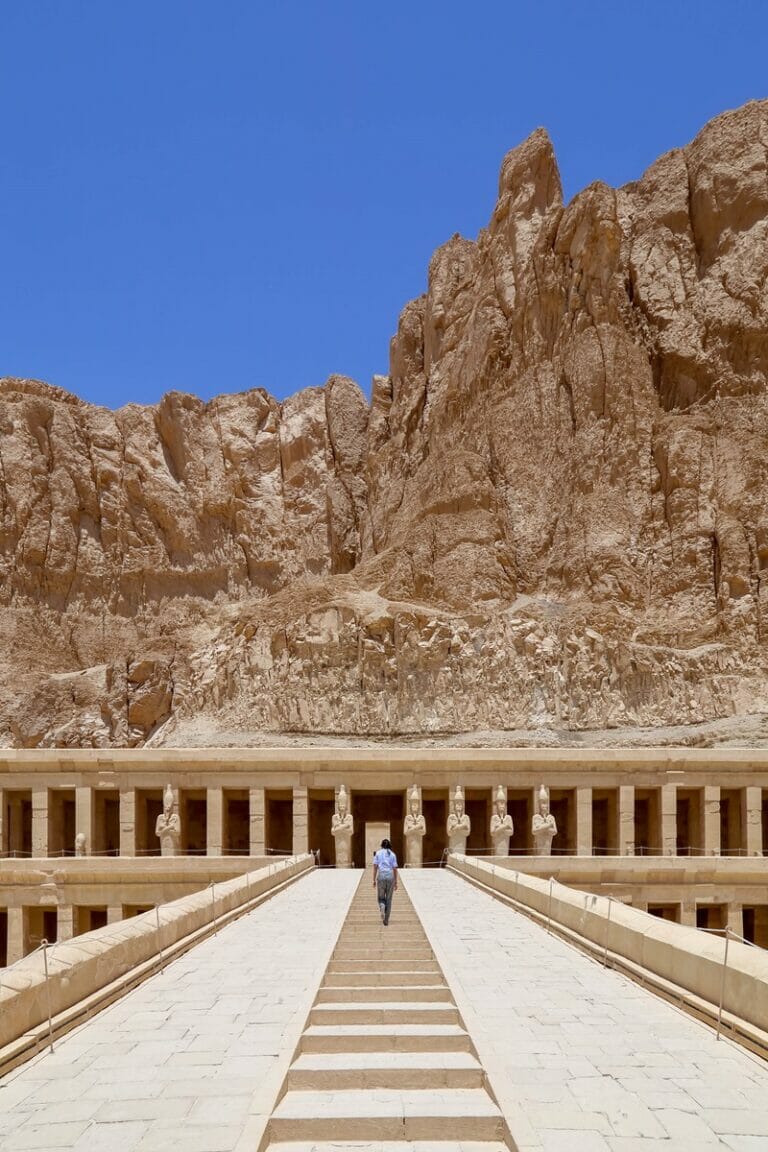
She is one of the only female pharaohs of Egypt and reigned for more than two decades. Today, her mummy can be found in the Mummy Room at the Egyptian Museum in Cairo.
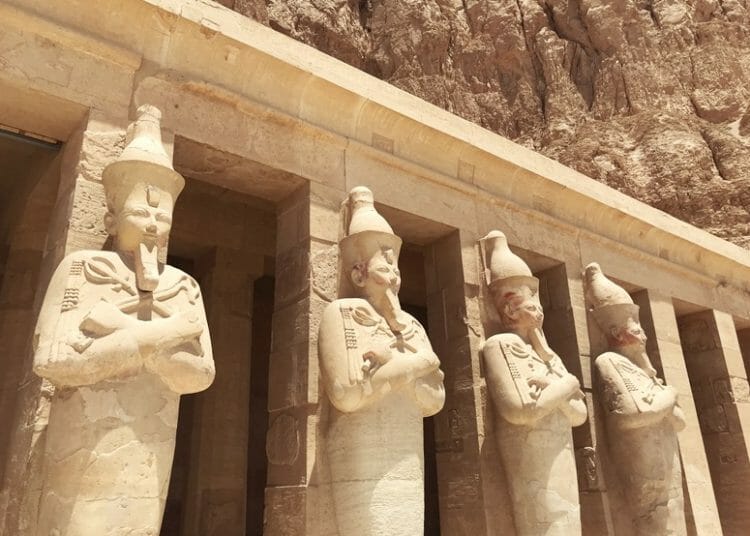
The temple has been painstakingly restored by a team of Polish archaeologists, and is one of those structures that will take your breath away.
Examine each of the columns that depict Queen Hatshepsut and layered terraces that stack one on top of the other, and be sure to make your way to the uppermost terrace to peek inside the inner chapel. Entry costs 100 LE per person.
4. Wander through the Karnak Temple complex
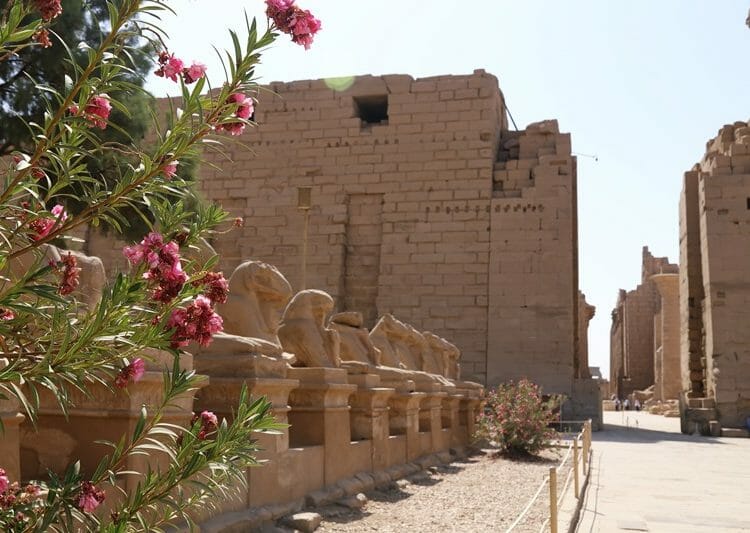
Dedicated to the god Amun-ra and his family, the magnificent Karnak Temple complex covers more than 400,000 square meters and took nearly 2000 years to build by generation after generation of pharaohs.
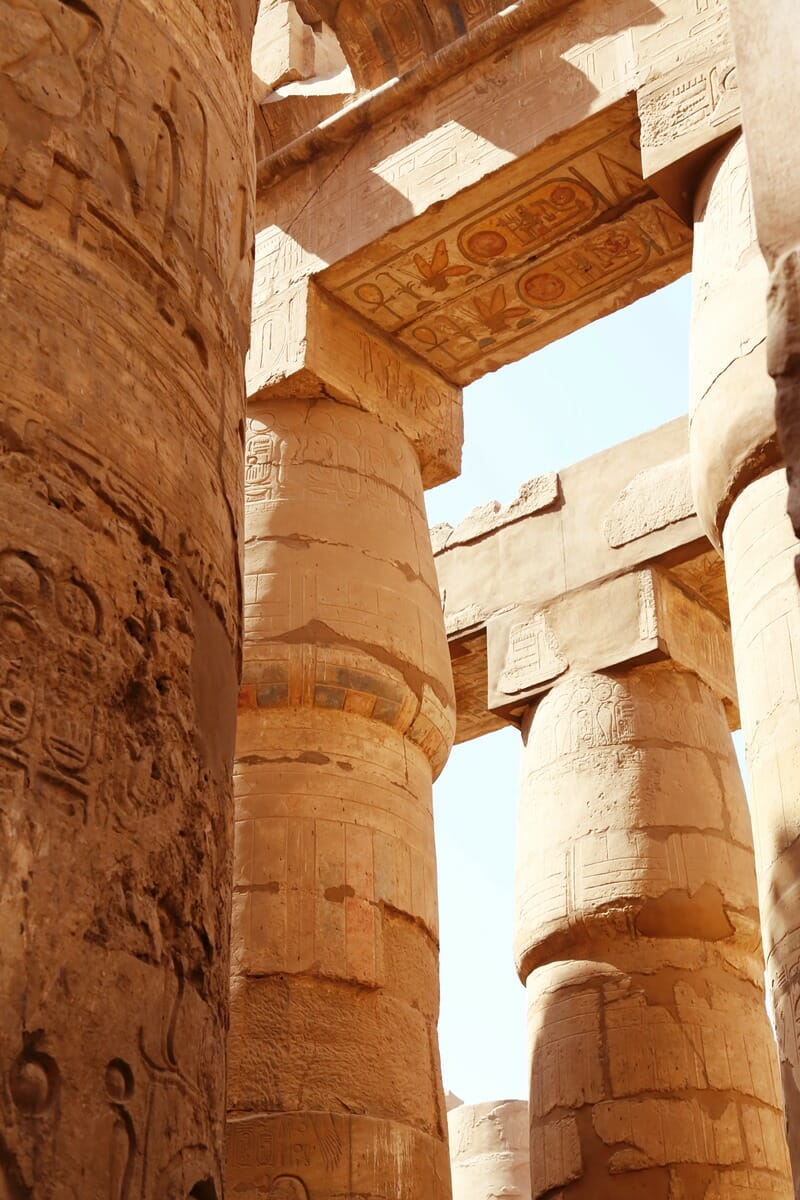
The complex is the largest place of worship ever built, and features a stunning “Hypostyle Hall”, a commanding jungle of towering columns.
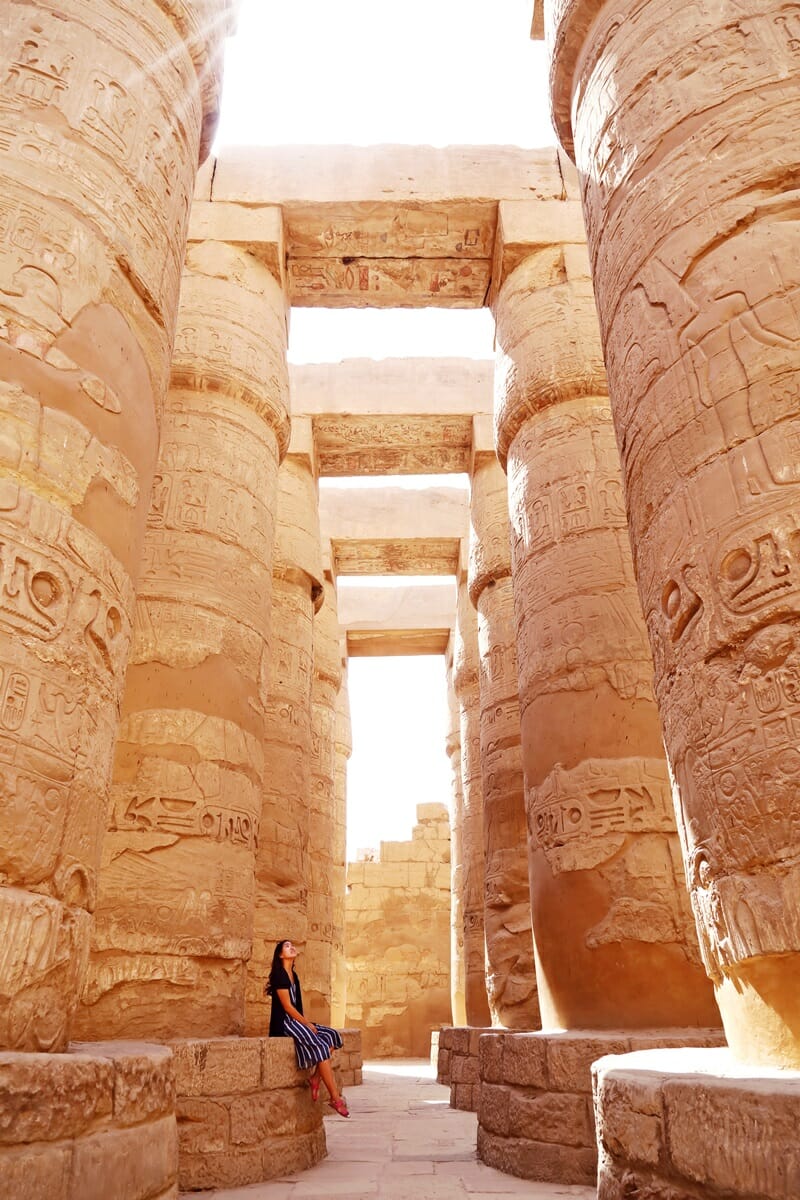
Though most of the colour has faded, some splashes of pigment still remain – look up and you’ll spot them on just a handful of columns.
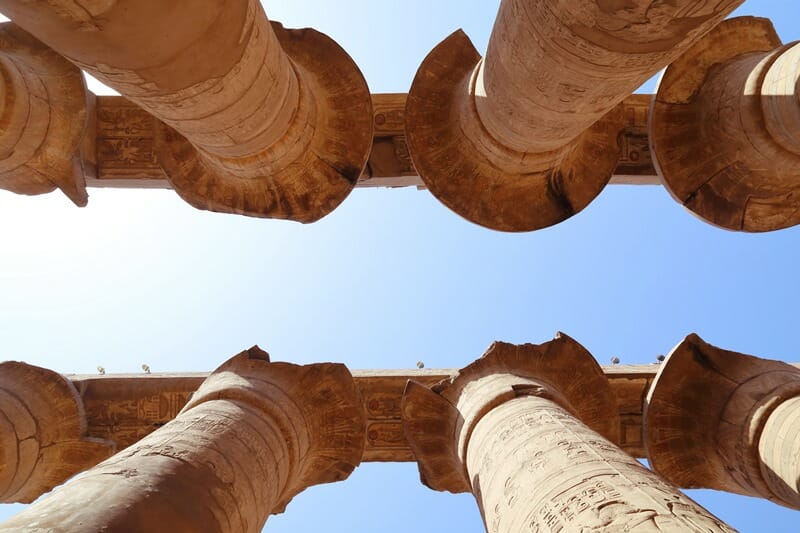
Make sure you check out the fallen segments of the Queen Hatshepsut Obelisk, the red granite scarab statue that people circle for good luck, and the ram-headed sphinxes.
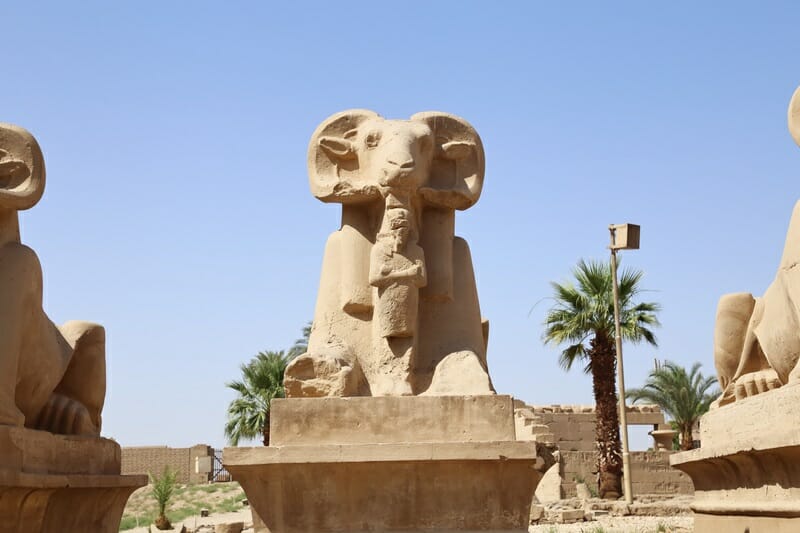
5. Check out the Luxor Temple
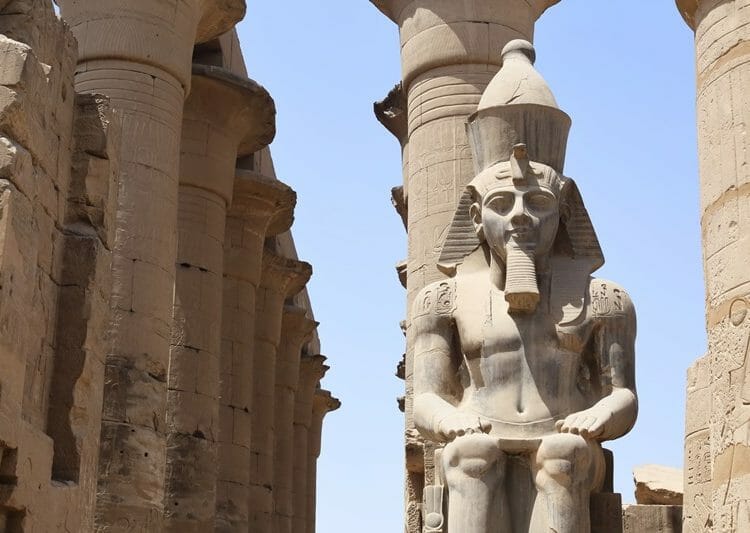
From the Karnak Temple, travel approximately 3 KM to reach the Luxor Temple which was built by Amenhotep III and Ramses II for rituals and festivals.
The colonnade, along with the decorated walls, was completed during the reign of Tutankhamun. Like the Karnak Temple Complex, this was also dedicated to the god Amun-ra, his consort and his son.
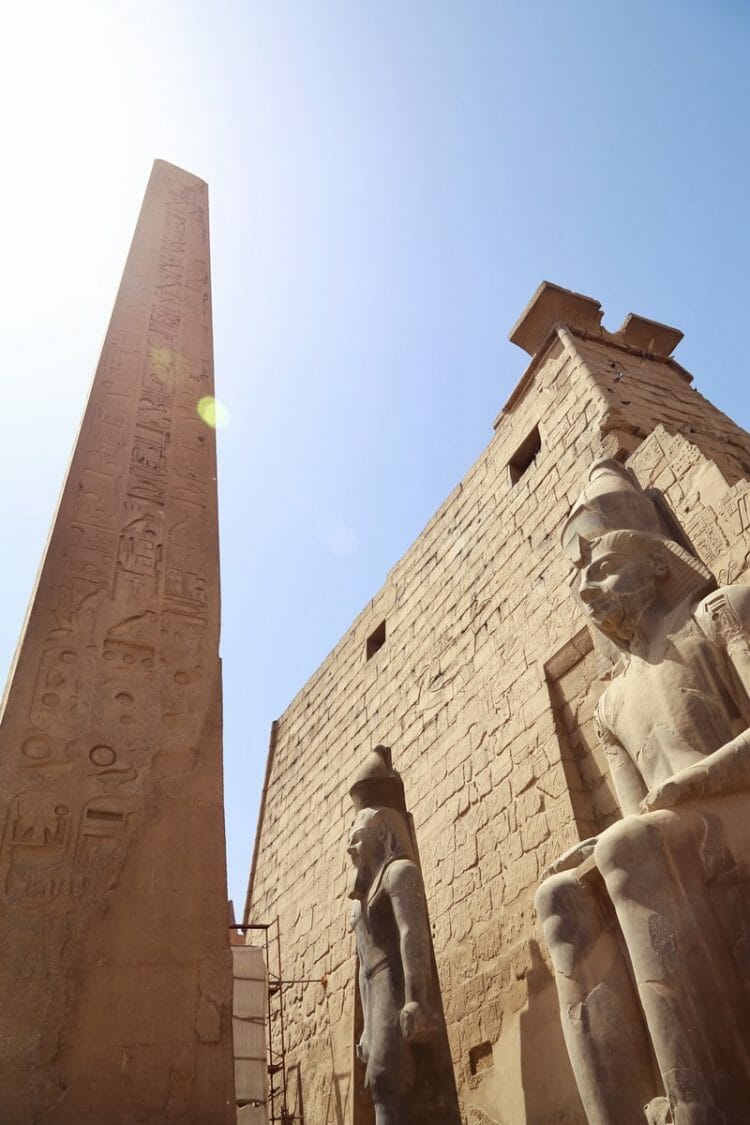
The imposing entrance to the temple is flanked on both sides by a total of six statues of Ramses II, the latest of which was only recently unveiled following significant restoration work.
The symmetry is incomplete due to a missing obelisk – one from this set was gifted to France and still stands in Paris today!
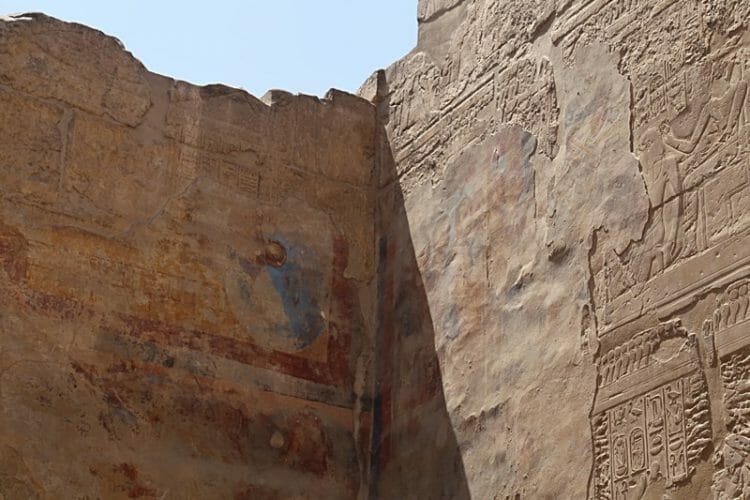
Luxor Temple has been re-purposed several times over the centuries: the temple’s hall was converted into a Christian church during the Christian era, and the western section was once a Coptic church as well. A mosque was also built within the temple complex and still forms part of the site today.

Pay close attention to the innermost sanctum which still shows evidence of heavy smoke from fires that were set to destroy and cover the depictions of Egyptian gods. Archaeologists are now conducting restoration work to remove the stains from the walls.
6. See the Avenue of Sphinxes
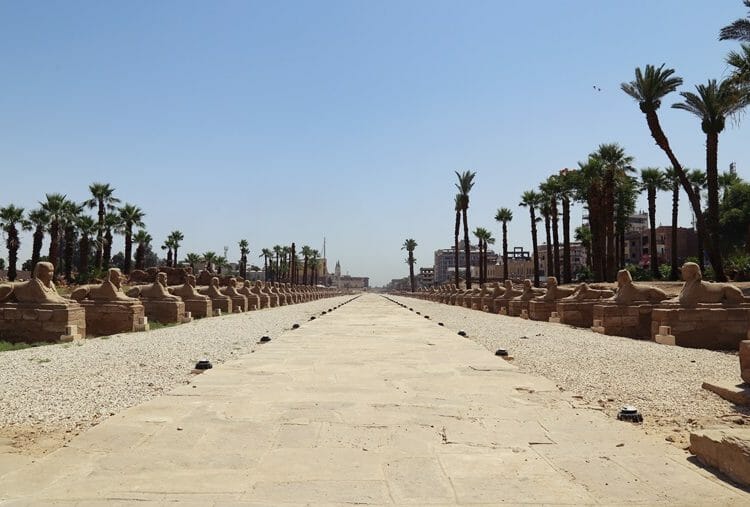
The “Avenue of Sphinxes” is a 3-kilometre long parade of sphinx statues that once connected the Karnak Temple Complex and Luxor Temple. The road was used for an annual religious festival where statues of Amun and his consort were paraded from temple to temple.
It is thought that nearly 1400 sphinx statues lined this road, some of which actually have ram’s heads instead of the traditional human head.
Much of the avenue was beneath urban buildings in Luxor, and some buildings and houses were demolished in order to excavate the avenue and its sphinxes.
The project to excavate and restore the Avenue of Sphinxes began in 2005 (but was halted between 2011-2017) and about 600 million LE (US$34 million) has been spent on the project thus far. Eventually, the entire avenue will be accessible to the public – when we visited only sections were viewable and cordoned off, but still amazing to see in person!
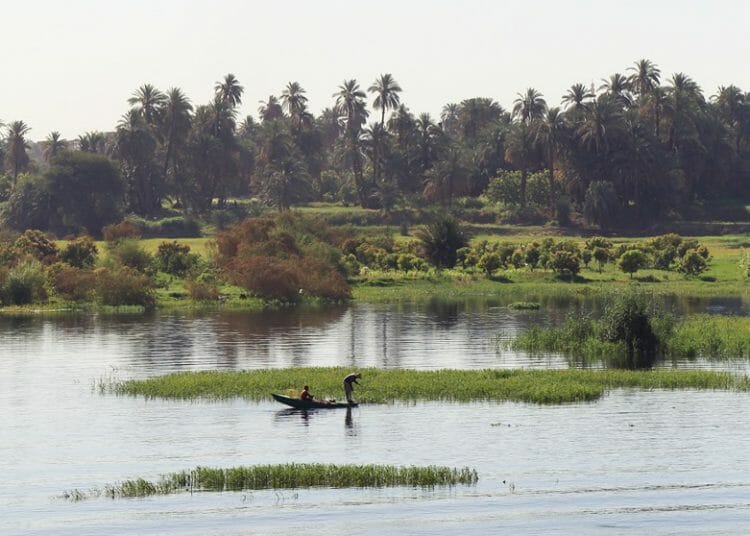
If you have more than 2 days in Luxor, you may also want to venture out to the Valley of the Queens, visit Howard Carter’s home (which has been converted into a museum), go on a felucca ride on the Nile, or tour the Luxor Museum.
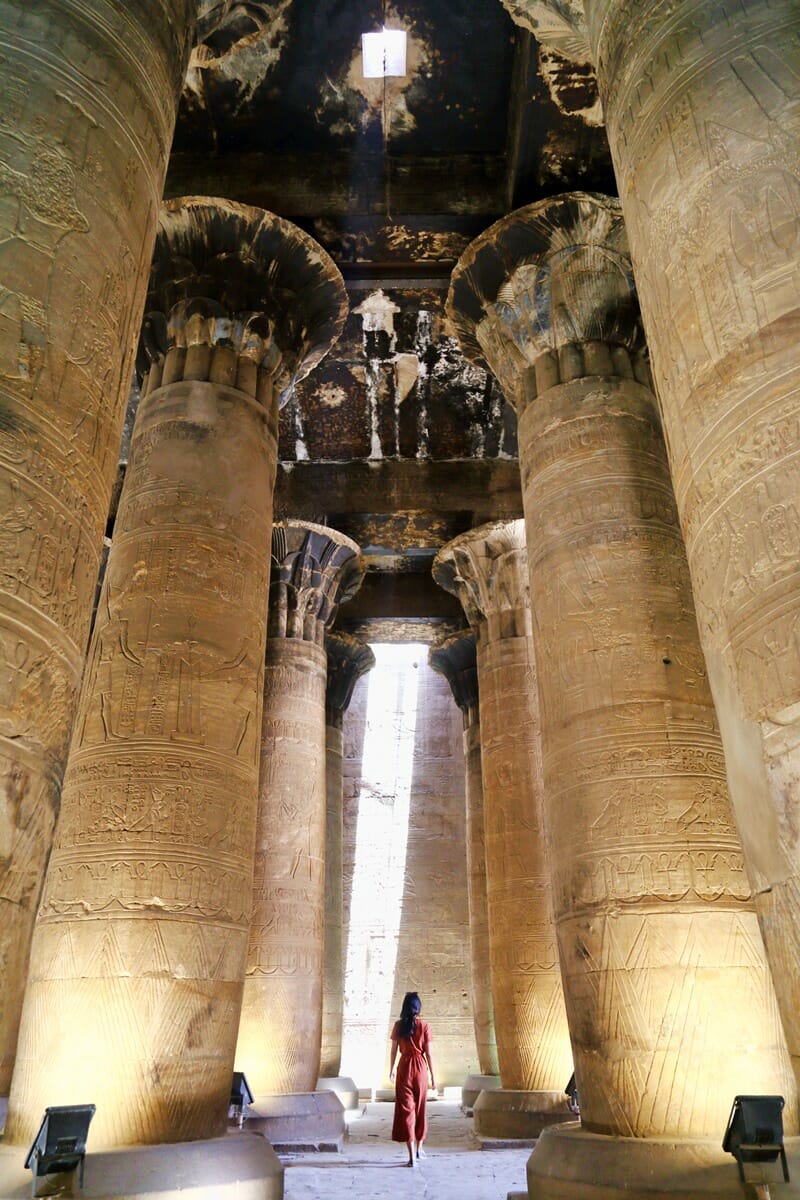
If you are looking to head out for a day trip from Luxor, I recommend visiting the Edfu Temple dedicated to the falcon god Horus.
I hope this guide helps you to better plan your trip to Egypt! Read more about visiting Egypt here:
- 16 Essential Things to Know Before Traveling to Egypt
- Highlights of Egypt: A 7 Day Egypt Itinerary for First Time Visitors
- Experience Egypt: How to Spend 2 Days in Cairo (And What to See Besides the Pyramids)
- Also headed to Jordan? You might also find this combined 2 week Jordan and Egypt itinerary helpful
Pin this for later!
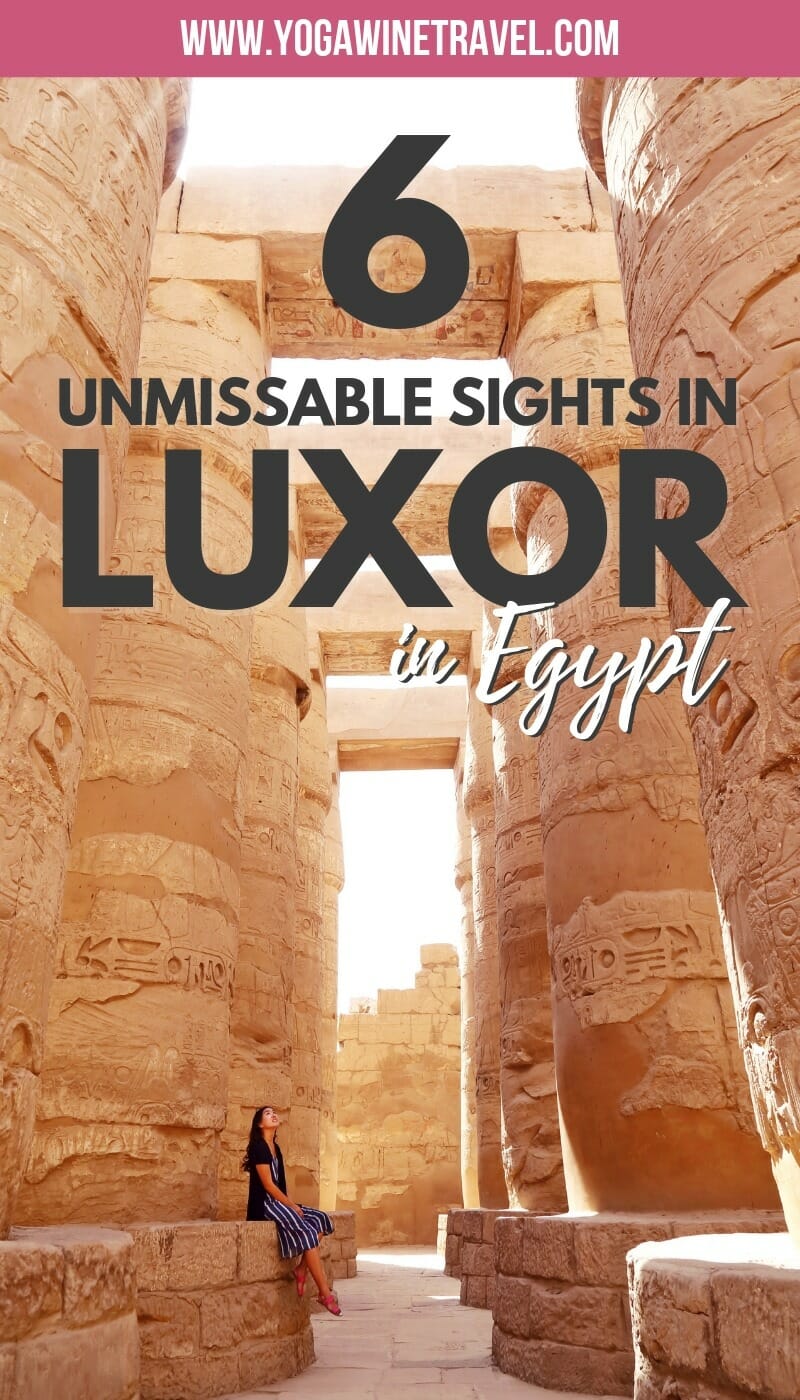
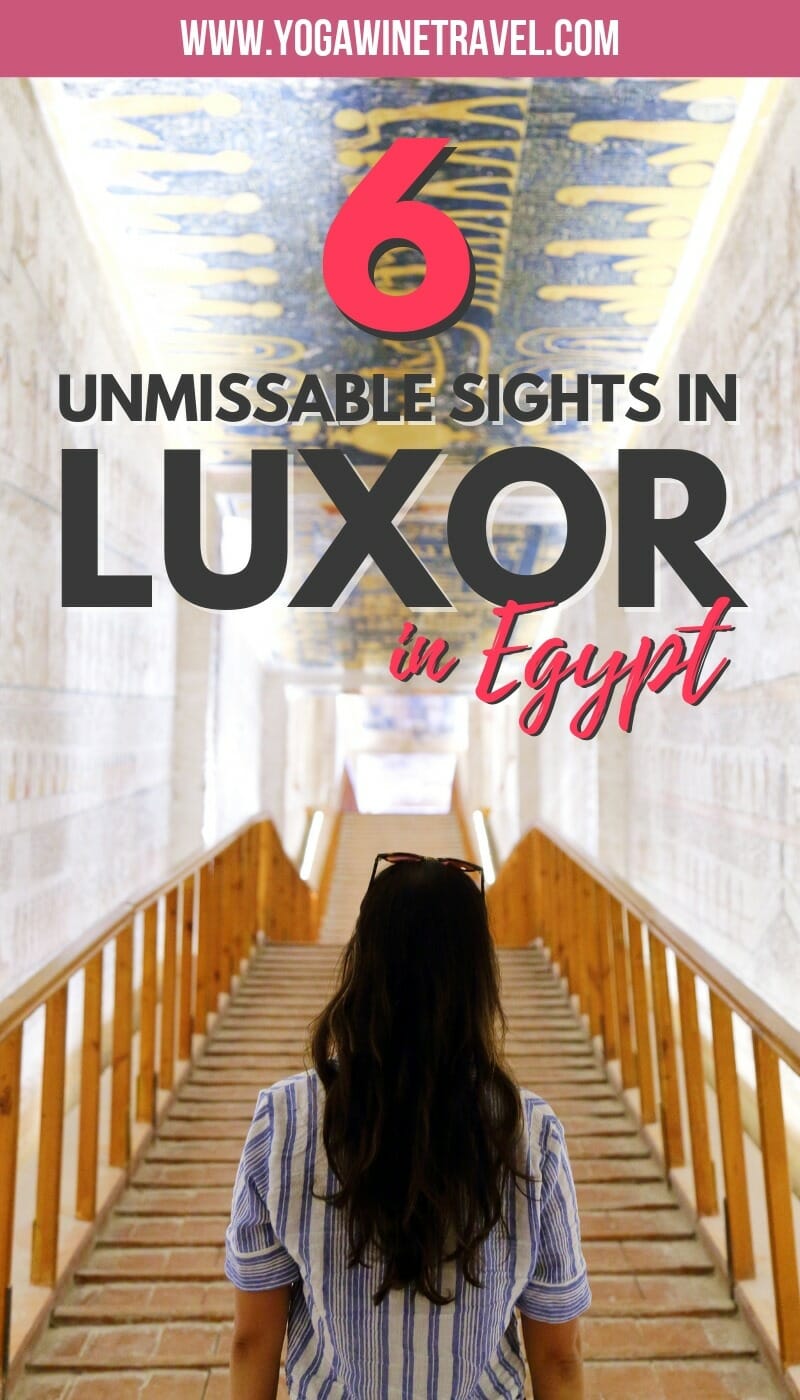
Just so you know, this is not a sponsored post. We were paying customers on the tour with Your Egypt Tours, I am not an affiliate and don’t receive any commission from any tours booked. As per usual, all opinions are my own, and you can always expect candid and honest feedback from me (regardless of whether a trip was sponsored or not). This post may, however, contain other affiliate links. If you choose to use these links, I will earn a small commission at no extra cost to you. Thank you for supporting my website by using these links.
Enjoyed reading this article? Subscribe to the mailing list!
* Unsubscribe at any time. Your e-mail address will only ever be used to send the occasional Yoga, Wine & Travel newsletter.

